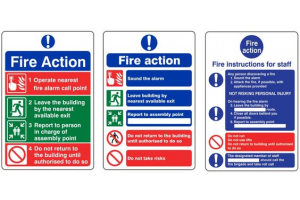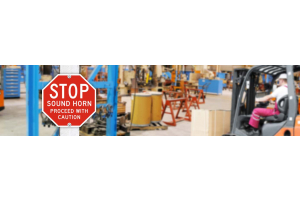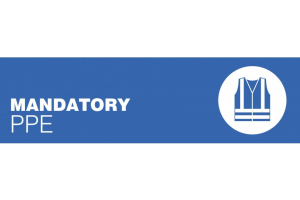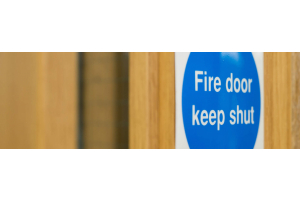
Appointment of safety representatives
For the purposes of section 2(4) of the 1974 Act, a recognised trade union may appoint safety representatives from amongst the employees in all cases where one or more employees are employed by an employer by whom it is recognised. Where the employer has been notified in writing by or on behalf of a trade union of the names of the persons appointed as safety representatives under this Regulation and the group or groups of employees they represent, each such safety representative shall have the functions set out in Regulation 4 below.
A person shall cease to be a safety representative for the purposes of these Regulations when: (a) the trade union which appointed him notifies the employer in writing that his appointment has been terminated; or (b) he ceases to be employed at the workplace but if he was appointed to represent employees at more than one workplace he shall not cease by virtue of this sub-paragraph to be a safety representative so long as he continues to be employed at anyone of them; or (c) he resigns.(4) A person appointed under paragraph (1) above as a safety representative shall so far as is reasonably practicable either have been employed by his employer throughout the preceding two years or have had at least two years experience in similar employment. When the Safety Representatives and Safety Committees Regulations were introduced, employees in a mine were specifically excluded from the provision of section 3(1). This was amended by regulation 13 of the Health and Safety (Consultation with Employees) Regulations 1996, so that recognised trade unions can now appoint safety representatives to represent employees working at coal mines. This change does not affect the provision in the Mines and Quarries Act 19547 for the appointment of workers’ inspectors.
Although there is some overlap between that provision and regulation 5 of the Safety Representatives and Safety Committees Regulations 1977, HSE believes that, in practice, employers and trade unions will be able to reach agreement on arrangements which will meet the requirements of both the Mines and Quarries Act 1954 and the Safety Representatives and Safety Committees Regulations 1977.
Who appoints health and safety representatives?
The Regulations mean that recognised trade unions may appoint health and safety representatives to represent the employees. Any disputes between employers and trade unions about recognition should be dealt with through the normal employment relations machinery. Acas can offer advice and guidance relating to trade union recognition issues, and may provide conciliation where there is a dispute. Deciding who to appoint as a health and safety representative: The Regulations require appointed health and safety representatives to normally have either worked for their present employer throughout the preceding two years or have had at least two years’ experience in similar employment. This is to ensure they have the necessary experience and knowledge of their particular type of work to enable them to make a responsible and practical contribution to health and safety in their workplace. However, circumstances may arise where it will not be reasonably practicable for the appointed health and safety representative to possess such experience (eg where the employer or workplace location is newly established, where work is of short duration, or where there is a high labour turnover). In such cases, trade unions will appoint the most appropriate representatives, in relation to their experience and skills.
Who do health and safety representatives represent?
Normally, recognised trade unions will appoint representatives to represent a group or groups of workers of a class for which the union has negotiating rights. However, limiting representation to a particular group or groups should not be regarded as a hindrance to the representative raising general matters affecting the health and safety of employees as a whole. Equally, these general principles do not prevent a health and safety representative representing, by mutual agreement between the appropriate unions, more than one group or groups of employees (eg in a small workplace or within the organisation of a small employer when the number of recognised trade unions is high relative to the total numbers employed).25 Additionally, a health and safety representative employed by the same employer can represent employees who do not work at the same site as them. There is nothing in these Regulations to prevent a health and safety representative being appointed to represent a group of employees at more than one site. Therefore, if you have a multi-site business it may be appropriate for a representative to represent a group of employees across a number of sites, provided this is practical. This is to enable the best arrangements for representation to be made, although you should discuss and agree such arrangements with the recognised trade unions, find out more.
When trade unions are considering the numbers of health and safety representatives to be appointed in a particular case, paragraph 13 of the Code of Practice should be borne in mind so that employers and the recognised trade unions can reach the degree of agreement necessary to achieve the purpose of the Regulations. Appropriate criteria would include:
- (a) the total numbers employed;
- (b) the variety of different occupations;
- (c) the size of the workplace and the variety of workplace locations;
- (d) the operation of shift systems;
- (e) the type of work activity and the degree and character of the inherent dangers.
There should be good communication between the health and safety representatives and the management team responsible for making health and safety decisions, so that issues are promptly picked up and addressed. There may be a need for flexibility of approach, both to the question of the group (or groups) of the employees the health and safety representative represents, and to the number of safety representatives that might be appropriate in particular circumstances. Examples of such circumstances might include: workplaces with rapidly changing situations and conditions such as dealing with Covid-19 as the work develops and where there might be rapid changes in the numbers of employees, eg building and construction sites, shipbuilding and ship repairing, and docks etc; workplaces from which the majority of employees go out to their actual place of work and subsequently report back, eg goods and freight depots, builders’ yards, service depots of all kinds; workplaces where there is a wide variety of different work activities going on within a particular location, and some chemical works and research establishments; workplaces where the majority of employees are employed in low-risk activities, but where one or two processes or activities or items of plant have special risks connected with them; workplaces where work activities may be spread over several different, but linked, locations.




